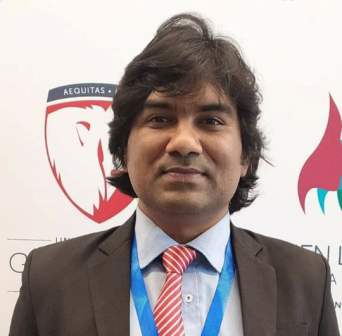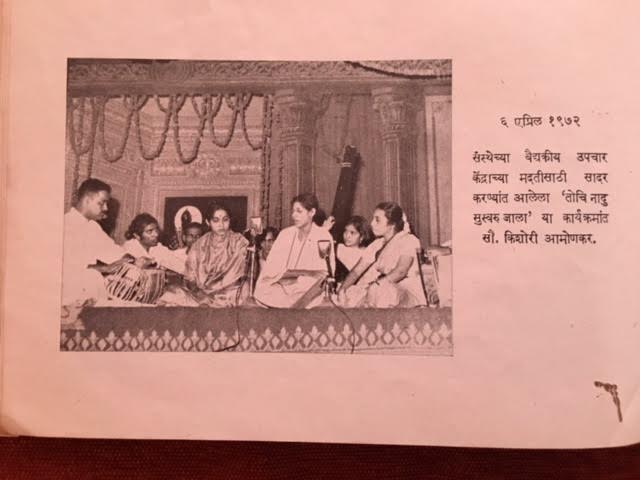Swapnil Dhanraj
 The rhetoric of Beti Bachao, Beti Padhao has failed once again in Uttar Pradesh. Manisha Valmiki, a young Dalit girl succumbed to her injuries in Delhi on 29th of September. May be her disappearance will not have any impact on the national consciousness of this country. However, it is not an off-incident. It highlights the unending repression of Dalits and undissolved caste arrogance of the dominant caste communities in India today. The caste governing ethos of Indian society has always created havoc in the lives of Dalits and marginalised communities. The brutal killing of Manisha Valmiki in Uttar Pradesh’s Hathras town does not only represent an untoward incident of atrocity, but also a gradual and systemic genocide of Dalits in India.
The rhetoric of Beti Bachao, Beti Padhao has failed once again in Uttar Pradesh. Manisha Valmiki, a young Dalit girl succumbed to her injuries in Delhi on 29th of September. May be her disappearance will not have any impact on the national consciousness of this country. However, it is not an off-incident. It highlights the unending repression of Dalits and undissolved caste arrogance of the dominant caste communities in India today. The caste governing ethos of Indian society has always created havoc in the lives of Dalits and marginalised communities. The brutal killing of Manisha Valmiki in Uttar Pradesh’s Hathras town does not only represent an untoward incident of atrocity, but also a gradual and systemic genocide of Dalits in India.
Though the Indian constitution ensured the safety and rights of the marginalised communities, they have only witnessed a pool of blood and ashes in their social and political lives. Uttar Pradesh has always remained the epicentre of atrocities against Dalits and marginalised communities. Most importantly, the atrocities against Dalit women in the state of UP have given repeated signals to the Indian state and the civil society to wake up from their slumbers. But unfortunately, only a handful of people could understand the barbarity of this crime.
In August this year, a 13 year old Dalit girl was raped and murdered in Uttar Pradesh and now Manisha has lost her life to the wounds of caste brutalities. A cold response by the Indian government and people of India to the brutal incident raises some serious questions. Do the lives of Dalit women really matter in our so-called democratic nation? Is it the spinelessness of the Indian citizens or to borrow professor Y. S. Alone’s term the “protected ignorance” of the Indian society which does not recognise the manner in which Dalit lives have been eliminated today?
In post independence India the Indian constitution is considered to be the most democratic and egalitarian constitution which guarantees equal rights for all, but its control still remains in the hands of the oppressors. Though the constitution of India confers equal rights to Dalits, through these everyday killings of Dalits in various parts of the country, the upper castes have made sure that their domination cannot be easily eradicated from the social, political and economic lives of Dalits. As a believer in the idea of modernity, Ambedkar’s role in the making of the Indian constitution had certainly created a hope for altering the inhuman practices like untochability.
As Indian political scientist Harish Wankhede argues, “armed with constitutional directives and protected by modern institutions, it was assumed that Dalits would emerge modern citizens and would exploit the benefits of a liberal democracy without social fears and prejudices”. Unfortunately the modern Institution of state itself has become an ally of the oppressors today. The intervention of police turns into an act of demolishing the evidence and shielding the culprits. Ironically, Manisha’s family was not allowed to be present for her last rites. Like many other cases Manisha’s family too experienced that the police intervention did not help them combat the criminals. It also shows the caste prejudice of the system against Dalits.
The same date, 29th of September when Manisha Valmiki passed away, also marks the completion 20 years of the Khairlanji massacre. The latter remains one of the most inhuman crimes against Dalits in Indian history. In this case also the prejudiced Indian media chose not to report the incident in the beginning, however, after witnessing state-wide rallies and protests it started reporting the incident reluctantly. Khairlanji was not the only massacre that Dalits have witnessed. The disturbing memories of butchering of Dalits in Bihar by the Ranvir Sena in Bathani Tola (1996), Lakshmanpur Bathe (1997), and Shankarbigha in Jehanabad (1999) have left a scar of brutality on the community. Interestingly, in these cases too women and children were the easy targets of the perpetrators. There are many unreported cases in every part of the country where Dalit women have witnessed caste brutalities in gruesome ways.
What does it indicate? The continuous act of caste atrocities against Dalit women, who remain a soft target of the oppressors, is not an individualistic attempt to suppress a community, but it is a social attitude of the dominant castes which constantly seeks to assert caste superiority in everyday life. Unfortunately, this superiority is often asserted by violating bodies of women from a marginalised community. This assertion of social superiority by the dominant castes through violence against Dalits in general and women in particular is gradually leading India towards the genocide of Dalits.
~~~
Swapnil Dhanraj is an Assistant Professor at O.P Jindal Global University, Sonipat, Haryana. He has done his PhD from Centre for the Study of Social Systems, Jawaharlal Nehru University, New Delhi.










